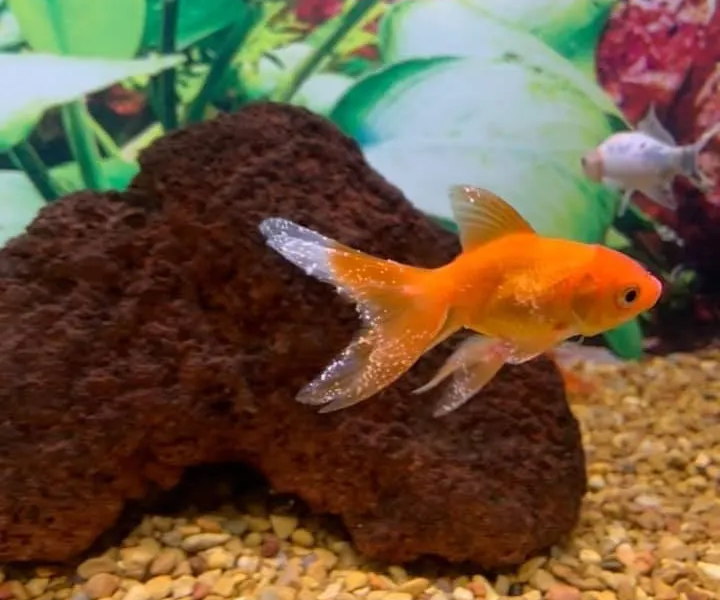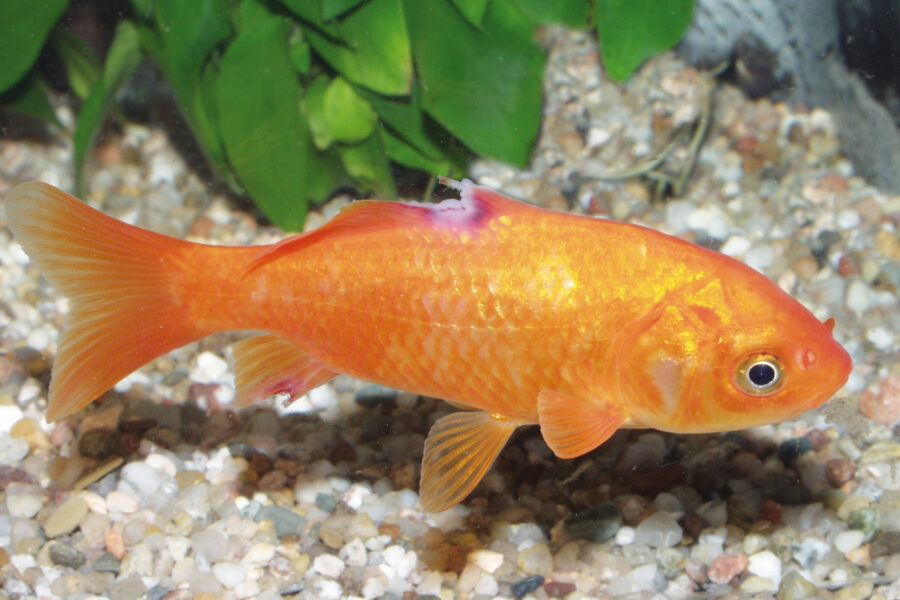
Ich in Goldfish might sound like a fancy sushi dish, but it’s quite the opposite. Have you ever noticed your goldfish shimmering a bit too much? It’s not just the lighting or your affectionate gaze – that added sparkle could be a sign of Whitespot Disease, commonly known as Ich. Think of it as miniature extraterrestrials taking residence on your fish’s scales. While this might sound like a sci-fi movie, the reality is that these tiny parasites can turn your shiny goldfish into a speckled spectacle.
Let’s dive deep into understanding, combating, and keeping Ich at bay. And remember, no flash photography – these critters prefer the spotlight off them.
What is Ich(Whitespot Disease) in Goldfish?

Alright, folks. Let’s talk about our aquatic buddies and an uninvited guest they sometimes have, technically called Ichthyophthirius multifiliis or Ick. But, you’re more likely to hear it called ‘Ich’ or ‘whitespot disease.’ This is not a rite of passage for fish. More like a pesky intruder who loves to crash the party.
Understanding the Parasitic Infection
So, let’s break it down. Ich is a type of parasite. Like that friend who always pops by unannounced, eats all your food, and borrows money without paying back (don’t we all know one of those!). More seriously though, Ich is a nasty microscopic sucker that attaches itself to your fish’s body and gills. It’s not just uncool, it’s parasitic. It feeds on the host, in this case, our poor goldfish, causing intense irritation and discomfort. Not a pretty sight.
Frequency of Ich in Household Aquariums
Now, you’re probably thinking, “Well, I’ve had goldfish for years and never had an Ich invasion!” That’s super, and we want to keep it that way! But, bear in mind, this little trouble-maker tends to be quite common in household aquariums. Studies show that, whether you’ve witnessed an outbreak or not, there’s a good chance it has hitched a ride into your tank at some point. It’s not meant to scare you, just a little heads-up to keep an eye out for tell-tale signs.
And on that note, let’s maneuver our way into identifying these symptoms. Cue epic soundtrack – it’s detective time! Buckle up, as we learn to be the Sherlock Holmes of goldfish diseases!
Symptoms of Ich in Goldfish
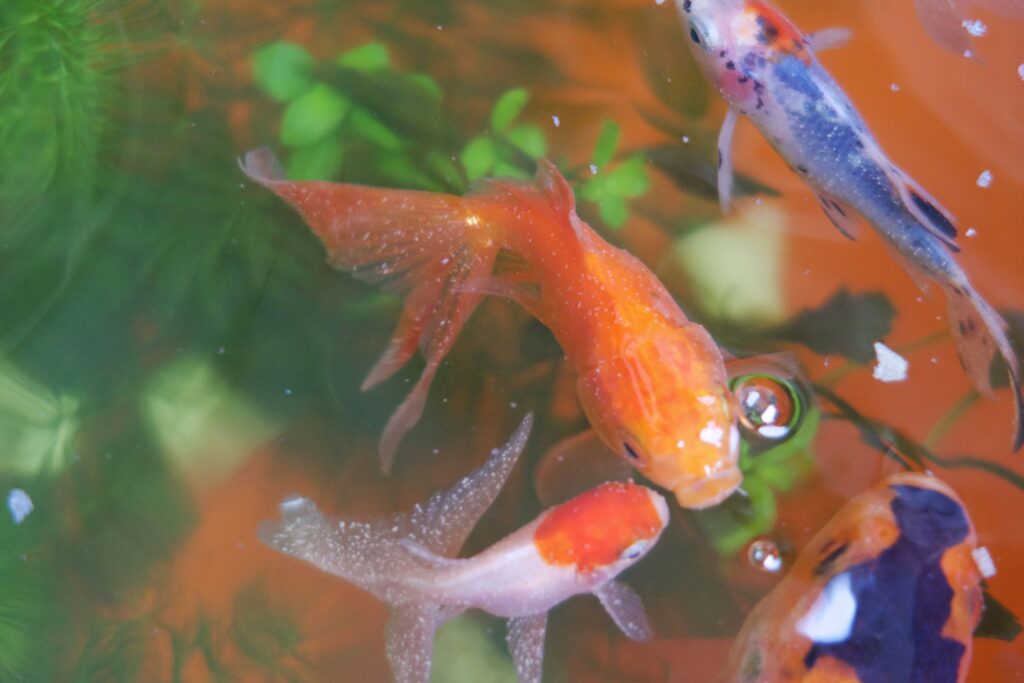
Being a fish parent is no joke. So, when your pet goldfish pulls a sickie, it’s only fair you know how to help it swim back to health. Because nobody likes a sick fish, right? For that, you need to be familiar with these Ich symptoms.
Physical Signs to Look Out For
If your goldfish were a teenager, it would probably tell you “I’m Ich-ing all over!” That’s because this infection manifests as white spots on the skin, fins, gills, and eyes of goldfish. These spots aren’t there for show but an indication of Tomfoolery among your fish. Along with these spots, you may also notice slime or excessive mucus on their body.
Changes in Goldfish Behavior
Trust me, goldfish aren’t the greatest at expressing their feelings verbally. So, you got to be a keen observer to pick up on behavioral changes. A sick goldfish may scratch its body against aquarium stuff, showing what we call the “Ich itch.” Other changes include lack of appetite, clamped fins, or more time spent near the bottom of the tank (who knew a cube of water could have so many hangouts!).
By now, you’ve probably already counted those whitespots and noticed Sparky’s unusual swim-stray-towards-the-bottom routine. But before pulling out your pet doctor hat, let’s take a walk around the possible causes for this pesky infection in our next section, ‘Causes of Ich in Goldfish.’ Just a heads up, it might not be what you’re expecting!
Causes of Ich in Goldfish
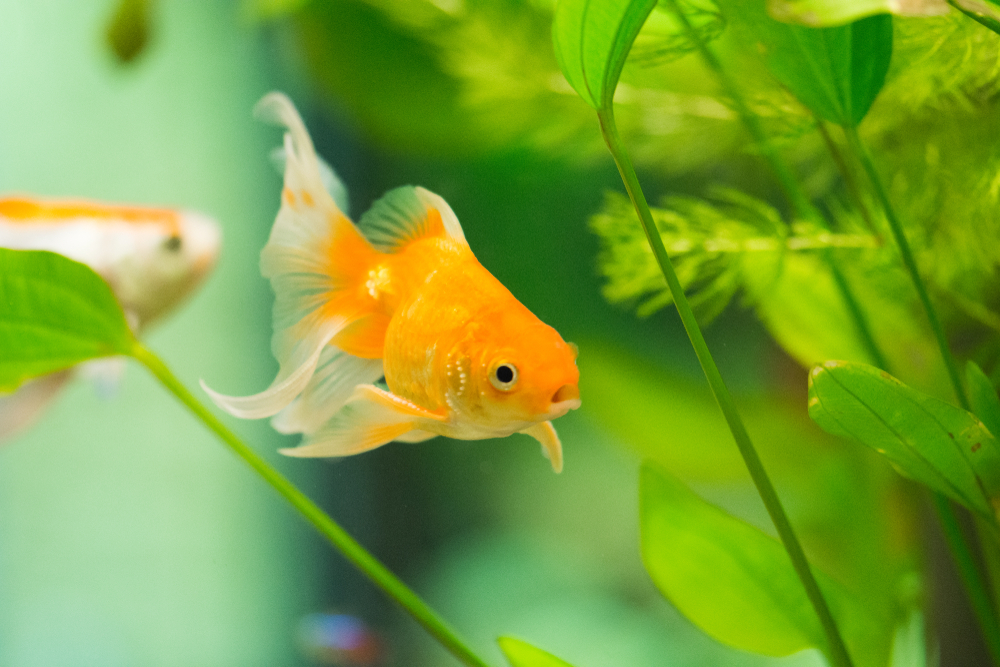
Parasites are often the life of the party no one invited. When it comes to bringing the ‘fun’ to your goldfish’s world, nothing does it better than the Ich parasite. Let’s dive into the shindig and see what goes down.
How Goldfish Get Infected
The main question here is, how do innocent goldfish get roped into this unsolicited party? Well, Ich, like any uninvited guest, loves crashing parties. Most often, it sneakily enters your aquarium through new aquatic plants or fish carrying the parasite.
Think of it as a stowaway, blending in with the crowd until it’s ready to strike. Once in the water, it gravitates towards your unsuspecting goldfish, latching on and causing all sorts of chaos. Innocent fun, huh?
Environmental and Stress-related Factors
Now, for the parasites to truly let loose, they need the right party-friendly environment. Stressful conditions are like party lights for these parasites. If your goldfish is stressed due to poor water conditions, tank overcrowding, or quick water temperature changes, it’s like an open invite.
Poor water quality, especially, is like a free VIP pass for the parasite to come and wreck havoc. So now we know how the ‘Ich Party’ gets out of control, let’s move on to shutting down this bash.
So, we’ve learned that the ‘Ich Party’ is not the kind of fun-in-a-tank we’re after. In our next section, we’re calling in the party poopers – treatments and remedies to give Ich the boot. Brace yourselves, as things are about to get fish-friendly!
How to Treat Ich in Goldfish
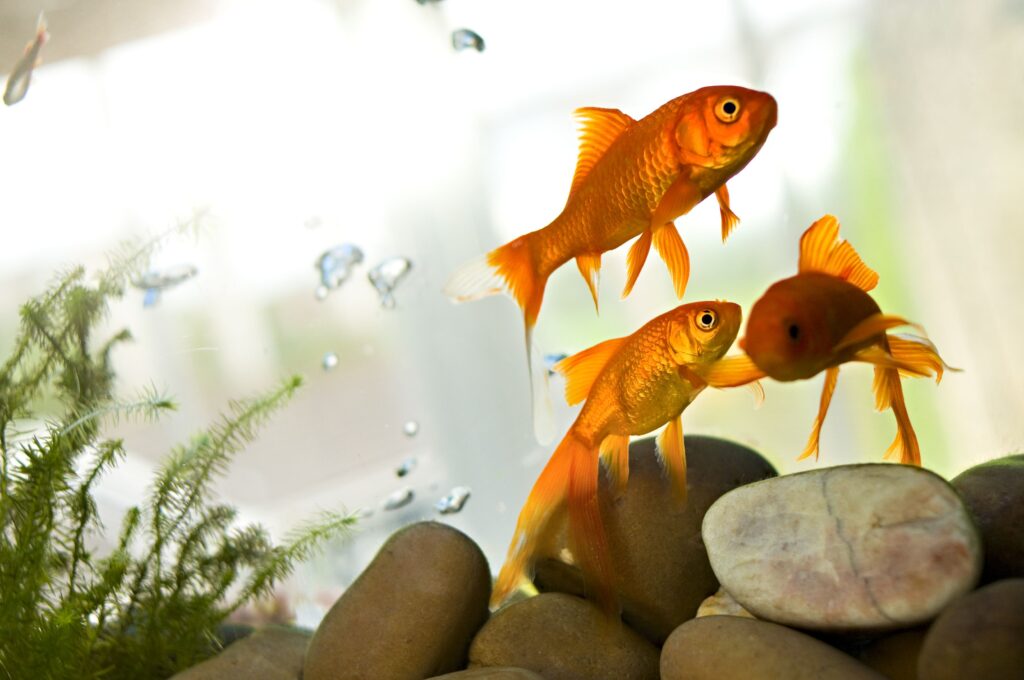
Just like your odd friend who decided to wear a tutu at your golf tournament, Ich stands out – and not in a pleasant way. So, let’s take a leap into the fish psychology (spoken of course, absolutely tongue-in-cheek) and help our little gold-bubbled friends out.
Over-the-counter Treatments and their Effectiveness
Not fond of parasites? Me neither. Luckily for our golden friends, there are chemicals at local pet stores to rescue them from this “icky” itch. Medicines like API Liquid Super ICK and Hikari ICH-X are quite the knights in shining armor, often proving effective in wiping out the parasite. However, buckle up because it can be a sort of hide-and-seek game as Ich parasites often hide in the gills. So, arm yourselves with patience and persistence, follow the instructions on the bottle, and remember: Rome wasn’t built in a day.
Alternative Remedies and Procedures
If you’re more inclined to use natural methods rather than chemicals to treat Ich, you have options. One effective alternative remedy is to increase the temperature of the tank’s water. Here’s a step-by-step procedure:
- Raise the Temperature: Gradually increase the water temperature to around 86°F (30°C). This speeds up the parasite’s life cycle, helping your goldfish get rid of the infection more quickly.
- Add Aquarium Salt: Add a teaspoon of aquarium salt per gallon of water to the tank. This aids in the treatment process by creating a less hospitable environment for the parasites.
- Monitor Your Fish: Keep a close eye on your goldfish as you use this method. Remember, while heat can help treat Ich, too much heat can be harmful. Ensure that the water temperature does not exceed 86°F (30°C), and avoid leaving the tank at this temperature for more than 10 days.
- Provide Proper Oxygenation: Higher water temperatures can reduce the amount of oxygen available to your fish, so make sure your tank is well-aerated during this time.
By carefully following these steps and closely monitoring your goldfish, you can help them recover from Ich naturally, without the use of chemicals.
Steps to Prevent Re-infection
Once our goldfish pals start swimming happily again, we can’t get complacent. To prevent an encore of this parasitic performance, it’s vital to keep the fish tank clean, monitor water parameters, and reduce goldfish stress by playing their favorite music (mostly classical, they’re classy like that). Remember, a clean joyful tank is a dreadful sight for any Ich parasite planning a reincarnation.
Thank buoys and gulls, we’ve covered treating Ich infections. Swimming towards the prevention strategies, shall we?
Ways to Prevent Ich
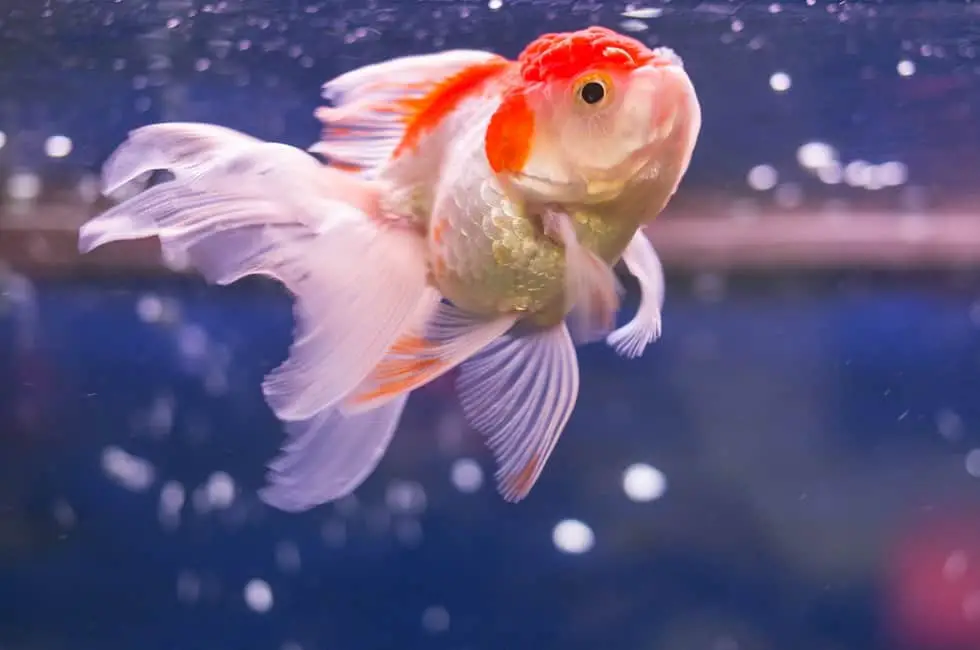
Dickens could have easily been describing the plight of goldfish when he penned, “It was the best of times, it was the worst of times.” A thriving lifetime in a tank can suddenly take a sharp nosedive if parasitic uninvited guests like Ich waltz in.
Best Practices for Goldfish Care
Care for goldfish is like making the perfect sandwich. It’s an art and a science, a blending of different elements. Keep your goldfish in optimum health with these fail-safe tips. One, ensure that the water temperature is stable, not too cold, not too hot. Think of it like Goldilocks’ porridge, “just right.” Two, avoid overcrowding the tank. If it’s starting to resemble a rush hour subway, it’s too much. Last, ensure balanced and suitable goldfish meals. Overeating can strike down the healthiest of goldfish faster than a lightning bolt. Meet these factors, and you’ve got a sliced bread seal of goldfish care.
Remember, prevention is better than cure, especially when our finned buddies don’t have the luxury of medical insurance.
Importance of Regular Tank Maintenance
Yes, yes, we’ve all heard it before. Tank maintenance, the endless cycle of cleaning and checking. Believe me, it’s as vital as that morning coffee for your brain.
A clean tank cuts down the risk of Ich by significant leaps and bounds. Keep an eye on the pH, ammonia, nitrite, and nitrate levels like a hawk. Change the water regularly but not all at once, fishes aren’t the biggest fans of dramatic changes. And don’t forget the cleanliness of the substrates and decorations. They can be like the sketchy corners of your kitchen, breeding grounds for who-knows-what. A clean tank is a happy tank. And happy tanks mean healthy goldfish.
To Sum Up
In conclusion, Ich or Whitespot Disease is a common disease in the aquatic world affecting many household goldfish tanks. Understanding the disease, recognising its physical and behavioural symptoms are crucial. Stress factors, environmental elements and knowing how infection pervades can go a long way in protecting your goldfish.
Furthermore, there are various treatment options available, both over-the-counter and alternative remedies. However, preventing recurring infection calls for strict best practices in goldfish care. Maintenance of the tank proves vital in this regard. Ultimately, prevention rather than cure should be your motto in fighting off this parasitic intrusion.
Frequently Asked Questions (FAQ)
Question: What exactly is Ich disease in goldfish?
Answer: Ich, also known as Whitespot, is a parasitic infection in goldfish caused by the parasite, Ichthyophthirius multifiliis. It’s characterized by white spots on the body of a goldfish and other discomforting symptoms.
Question: How often does Ich occur in home aquariums?
Answer: The frequency of Ich can vary, but it’s a common parasitic disease, especially in home aquariums with poor hygiene or maintenance practices.
Question: What are the main signs of Ich in goldfish?
Answer: The main signs include white spots on the fish’s body, lethargy, lack of appetite, rubbing against aquarium walls and unusual swimming behavior.
Question: How does Ich affect goldfish?
Answer: Ich affects the goldfish’s skin and gills, causing breathing issues, skin damage and, in severe cases, it can be fatal.
Question: How can I treat my goldfish who’s infected with Ich?
Answer: Treatments include over-the-counter medications, alternative remedies like salt baths, and improving aquarium conditions. Re-treatment may be necessary to ensure total eradication of the parasite.
Question: Can Ich be prevented in goldfish?
Answer: Yes, through good hygiene, proper feeding, and regular water changes. Maintaining a stress-free environment for your goldfish also helps to prevent the disease.
Question: Can a goldfish fully recover from Ich?
Answer: Yes, with proper and timely treatment, goldfish can fully recover from Ich. However, it’s crucial to monitor them for any recurring symptoms.


